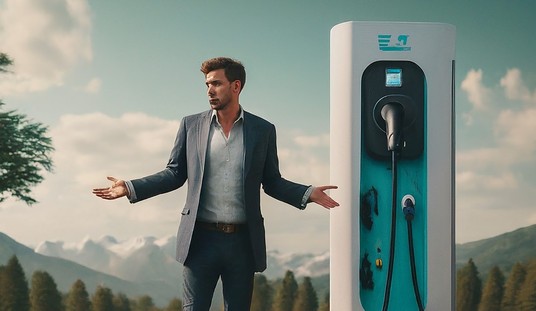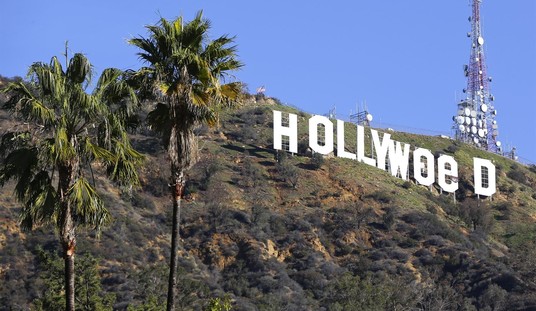As Rick pointed out on Wednesday, the theories surrounding the Maui wildfires are… creative. Actually, he used the word “crazy.” Those kinds of theories are not uncommon when a tragedy on this level occurs. And the longer it takes for the details to emerge, the more creative and numerous the theories are likely to become. But the truth is starting to come out.
And while there is no evidence of Direct Energy Weapons or an elitist plot to seize land, possibly under the aegis of none other than Oprah Winfrey, the facts should enrage not just Hawaiians but every person of conscience. It appears that there was no conspiracy but a confluence of bad weather, government ineptitude, and bureaucracy, laced with a healthy dose of environmentalism.
Since I’ve told this story before, I’ll be brief. Once upon a time, I was given an assignment to remove trees that were infested with bark beetles. The infestation would cause the trees to die, and the beetles would spread to nearby trees. This infestation would eventually lead to huge swaths of dead trees waiting for an ignition source that would lead to a catastrophic wildfire. I was berated by a wealthy left-winger who was allergic to the sound of chainsaws and thought I was destroying “his” forest. He rejected my explanation despite the overwhelming number of dead trees that proved my point. It is just such attitudes that led to the tragedy on Maui.
First, we have the conditions. Non-native plant species were brought into the state as part of farming, ranching, and the emergence of sugarcane plantations. Despite its location in the South Seas, Hawaii does have its dry seasons. Large quantities of light fuels whose growth has gone unchecked can carry fire very efficiently. The State of Hawaii knew about the fuels, and it knew about the danger.
The Wall Street Journal notes that almost ten years before this incident, fire researchers in Hawaii issued a report that the area was at high fire risk. In 2020, another report stated that fires were related to winds from a passing hurricane, much the same way Hurricane Dora affected the recent fires. In 2021, the County of Maui issued a report entitled “Cost of Government Commission — Report on Wildfire Preventions and Cost Recover on Maui. The Guardian obtained a copy of the report, and excerpts are below:
The investigation found that the number of incidents from a combination of wild/brush/forest fires appears to be increasing, and that this increase poses an increased threat to citizens, properties, and sacred sites. It was assumed at the start of the inquiry that an increase in fire events would subsequently increase firefighting cost overruns, response problems, and result in budgetary pressures for additional fire prevention and fire response resources. This assumption was not supported by the research. It was also assumed that new regulations would likely be needed to meet wildfire threats. This assumption was also not supported.
Wild/brush/forest fires present a growing threat to Maui County citizen safety and property. Island communities are particularly vulnerable because populations tend to be clustered and dependent on single highways, often located on the island edge. Any intrusion on road systems impacts transportation of goods and services and interrupts emergency vehicle response and transport. Escape routes and evacuation locations and resources for populations impacted by fire incidents are also impeded by fire incursions.
Importantly, Hawaii’s and Maui’s fire problem is more extreme than on the U.S. mainland. A collaborative study issued by University of Hawaiʻi wildland fire researcher Clay Trauernicht and other researchers found that Hawaiʻi lands burned by wildfires were increasing substantially over time, but at a higher rate than on the fire-prone U.S. mainland.4 The study, which reviewed State of Hawaiʻi wildfire records to examine historical trends from 1904–2011, and then evaluated contemporary wildfire occurrence from 2005–2011, found that the mean annual area burned by wild/brush/forest fires between 2005 and 2011 accounted for the destruction of 0.48% of Hawaii’s total land area.5 By comparison, the proportion of land area burned across the U.S. mainland totaled only 0.30%.6 Significantly, it was found that the 12 most fire-prone western states sustained a 0.46% loss over the same time period.
The full report is available here.
So the county and state governments had been made aware of the fire danger? On a personal note, I know from experience that these threats can be mitigated via mechanical methods. The State of Utah has made funds available to communities that want to decrease their risk of fire danger, and those funds paid my salary on more than one occasion.
By comparison, the Journal article adds that in 2014, in response to a report by the Hawaii Wildfire Management Organization, a plan was implemented to clear brush near populated areas, improve response time and work with utility companies and landowners to reduce the risk of fire. But the funding for improving response times and developing resources to tackle fire in rough terrain did not materialize.
And may I add that while clearing trees is one thing, light fuels tend to grow back very quickly. For example, in Utah, a species known as cheatgrass grows quite well, especially after a fire, when it then replaces the native grasses. It is particularly irksome when it comes to fire prevention. And as my old supervisor once said (barring open water), “The only place fire can’t go is where fire has already been.”
Then there is the matter of the power lines. Conspiracy theories aside, downed live power lines are likely the cause. The official cause has yet to be announced, but the evidence is pointing in that direction. National Review has uncovered information that Hawaiian Electric knew that its system had problems, but fixing those problems was not the company’s priority. The priority was developing renewable energy in order to comply with state law. (Emphasis mine.)
In 2015, Hawaii’s state legislature passed a bill mandating that all of the state’s energy come from renewable resources by 2045. Hawaiian Electric was having trouble meeting the mandate through the use of renewables after it shuttered two conventional power plants in 2019. The company was so focused on the environmental side that it did not deal with known problems with the grid. However, in the WSJ article mentioned above (and take special note of this):
Documents show Hawaiian Electric submitted a request for funding in 2022 from the public utilities commission to help offset the $189.7 million it said it needed to bolster its power grid across the state, including wildfire-prevention measures. The request is still being processed.
The request is still being processed.
One final point. According to the New York Post, Chief Herman Andaya, the head of Maui’s Emergency Management Agency who apparently holds a Ph.D. in CYA (and who has even less experience in emergency management than I do), is sticking by his decision not to activate the emergency sirens on the island. The country sent out alerts via television, radio, and text and through the opt-in resident alert system but did not activate the sirens. His rationale? The sirens are used for tsunami warnings and residents are conditioned to head for higher ground when the sirens go off.
He commented, “Had we sounded the siren that night, we’re afraid that people would have gotten mauka [toward the mountains] and if that was the case, then they would have gone into the fire. I should also note that there are no sirens mauka, or on the mountainside, where the fire was spreading down. So even if we sounded the siren, we would not have saved those people out there on the mountainside.” [sic] This defense seems to be predicated on the idea that people are unable to recognize smoke, intense heat, and massive flames, and the excuse that “well, we would not have saved everyone.”
No wonder people were so quick to howl, “Climate change!” The truth is far worse.
I only spent a few seasons in firefighting. I am not an old firedog, but I put some time in. I was also a volunteer HazMat Technician. As such, I am enraged, and you should be enraged, too because none of this had to happen. People did not have to die or go missing. Homes and businesses did not have to be destroyed. Lives did not have to be upended and permanently ruined. All of this was preventable. But the safety of the people of Maui took a backseat to the climate agenda, greed, ineptitude, bureaucracy, and people whose only interests were the next funding cycle and keeping their jobs long enough to walk away with a fat pension.
They knew. They all knew. They just didn’t care.










Join the conversation as a VIP Member